The UN’s 2030 Agenda for Sustainable Development is pitched as a “shared blueprint for peace and prosperity for people and the planet, now and into the future.” At the heart of this agenda are the 17 Sustainable Development Goals, or SDGs.
Many of these goals sound nice in theory and paint a picture of an emergent global utopia – such as no poverty, no world hunger and reduced inequality. Yet, as is true with so much, the reality behind most – if not all – of the SDGs are policies cloaked in the language of utopia that – in practice – will only benefit the economic elite and entrench their power.
This can clearly be seen in fine print of the SDGs, as there is considerable emphasis on debt and on entrapping nation states (especially developing states) in debt as a means of forcing adoption of SDG-related policies. It is then little coincidence that many of the driving forces behind SDG-related policies, at the UN and elsewhere, are career bankers. Former executives at some of the most predatory financial institutions in the history of the world, from Goldman Sachs to Bank of America to Deutsche Bank, are among the top proponents and developers of SDG-related policies.
Are their interests truly aligned with “sustainable development” and improving the state of the world for regular people, as they now claim? Or do their interests lie where they always have, in a profit-driven economic model based on debt slavery and outright theft?
In this Unlimited Hangout investigative series, we will be exploring these questions and interrogating – not only the power structures behind the SDGs and related policies – but also their practical impacts.
In this first instalment, we will explore what actually underpins the majority of the 2030 Agenda and the SDGs, cutting through the flowery language to deliver the full picture of what the implementation of these policies means for the average person. Subsequent instalments will focus on case studies based on specific SDGs and their sector-specific impacts.
Overall, this series will offer a fact-based and objective look at how the motivation behind the SDGs and Agenda 2030 is about retooling the same economic imperialism used by the Anglo-American Empire in the post-World War II era for the purposes of the coming “multipolar world order” and efforts to enact a global neo-feudal model, perhaps best summarized as a model for “sustainable slavery.”
The SDG Word Salad
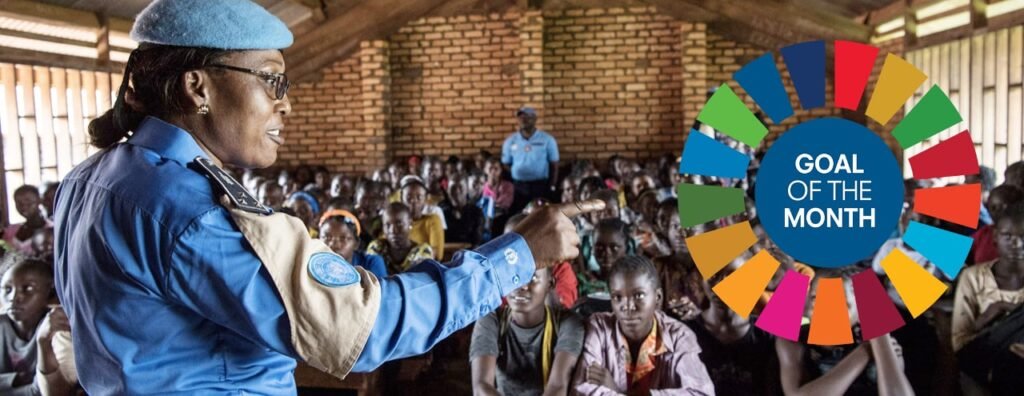
Most people are aware of the concept of “Sustainable Development” but, it is fair to say that the majority believe that SDGs are related to tackling problems allegedly wrought by climate disaster. However, the Agenda 2030 SDGs encompass every facet of our lives and only one, SDG 13, deals explicitly with climate.
From economic and food security to education, employment and all business activity; name any sphere of human activity, including the most personal, and there is an associated SDG designed to “transform” it. Yet, it is the SDG 17—Partnerships for Goals—through which we can start to identify who the beneficiaries of this system really are.
The stated UN SDG 17 aim is, in part, to:
Enhance global macroeconomic stability, including through policy coordination and policy coherence. [. . .] Enhance the global partnership for sustainable development, complemented by multi-stakeholder partnerships [. . .] to support the achievement of the sustainable development goals in all countries. [. . .] Encourage and promote effective public, public-private and civil society partnerships, building on the experience and resourcing strategies of partnerships.
From this, we can deduce that “multi-stakeholder partnerships” are supposed to work together to achieve “macroeconomic stability” in “all countries.” This will be accomplished by enforcing “policy coordination and policy coherence” constructed from the “knowledge” of “public, public-private and civil society partnerships.” These “partnerships” will deliver the SDGs.
This word-salad requires some untangling, because this is the framework that enables the implementation of every SDG “in all countries.”
Before we do, it is worth noting that the UN often refers to itself and its decisions using grandiose language. Even the most trivial of deliberations are treated as “historic” or “ground breaking,” etc. There is also a lot of fluff to wade through about transparency, accountability, sustainability and so on.
These are just words which require corresponding action in order to have contextual meaning. “Transparency” doesn’t mean much if crucial information is buried in endless reams of impenetrable bureaucratic waffle that isn’t reported to the public by anyone. “Accountability” is an anathema if even national governments lack the authority to exercise oversight over the UN; and when “sustainable” is used to mean “transformative,” it becomes an oxymoron.
Untangling the UN-G3P SDG Word Salad
The UN Economic and Social Council (ECOSOC) commissioned a paper which defines “multi-stakeholder partnerships” as:
[P]artnerships between business, NGOs, Governments, the United Nations and other actors.
These “multi-stakeholder partnerships” are supposedly working to create global “macroeconomic stability” as a prerequisite for the implementation of the SDGs. But, just like the term “intergovernmental organisation,” the meaning of “macroeconomic stability” has also been transformed by the UN and its specialised agencies.
While macroeconomic stability used to mean “full employment and stable economic growth, accompanied by low inflation,” the UN have announced that isn’t what it means today. Economic growth now has to be “smart” in order to meet SDG requirements.
Crucially, fiscal balance—the difference between a government’s revenue and expenditure—must accommodate “sustainable development” by creating “fiscal space.” This effectively disassociates the term “macroeconomic stability” from “real economic activity.”

Climate change is seen, not just as an environmental problem, but as a “serious financial, economic and social problem.” Therefore “fiscal space” must be engineered to finance the “policy coordination and policy coherence” needed to avert the prophesied disaster.
The UN Department for Economic and Social Affairs (UN-DESA) notes that “fiscal space” lacks a precise definition. While some economists define it simply as “the availability of budgetary room that allows a government to provide resources for a desired purpose,” others express “budgetary room” as a calculation based upon a countries debt-to-GDP ratio and “projected” growth.
UN-DESA suggests that “fiscal space” boils down to the estimated—or projected—“debt sustainability gap.” This is defined as “the difference between a country’s current debt level and its estimated sustainable debt level.”
No one knows what events may impact future economic growth. A pandemic or another war in Europe could severely restrict it, or cause a recession. The “debt sustainability gap” is a theoretical concept based upon little more than wishful thinking.
As such, this allows policy makers to adopt a malleable, and relatively arbitrary, interpretation of “fiscal space.” They can borrow to finance sustainable development spending, irrespective of real economic conditions.
The primary objective of fiscal policy used to be to maintain employment and price stability and encourage economic growth through the equitable distribution of wealth and resources. It has been transformed by sustainable development. Now it aims to achieve “sustainable trajectories for revenues, expenditures, and deficits” that emphasise “fiscal space.”
If this necessitates increased taxation and/or borrowing, so be it. Regardless of the impact this has on real economic activity, it’s all fine because, according to the World Bank:
Debt is a critical form of financing for the sustainable development goals.
Spending deficits and increasing debt are not a problem because “failure to achieve sustainable development goals” would be far more unacceptable and would increase debt even further. Any amount of sovereign debt can be heaped upon the taxpayer in order to protect us from the much more dangerous economic disaster that would allegedly befall us if the SDGs aren’t quickly implemented.
In other words, economic, financial and monetary crises will hardly be absent in the world of “sustainable development.” The rationale outlined above will likely be used to justify such crises. This is the model envisioned by the UN and its “multi-stakeholder partners.” For those behind the SDGs, the ends justify the means. Any travesty can be justified as long as it is committed in the name of “sustainability.”
We are faced with a global policy initiative, affecting every corner of our lives, based upon the logical fallacy of circular reasoning. The effective destruction of society is necessary in order to protect us from something that we are told is to be much worse.
Obedience is a virtue because, unless we adhere to the policy demands imposed upon us, and accept the costs, the climate disaster might come to pass.
Armed with this knowledge, it becomes much easier to translate the convoluted UN-G3P word-salad and figure out what the UN actually means by the term “Sustainable Development”:
Governments will tax their populations, increasing deficits and national debt where necessary, to create financial slush funds that private multinational corporations, philanthropic foundations and NGOs can access in order to distribute their SDG compliance-based products, services and policy agendas. The new SDG markets will be protected by government sustainability legislation, which is designed by the same “partners” who profit from and control the new global SDG-based economy.
“Green” Debt Traps
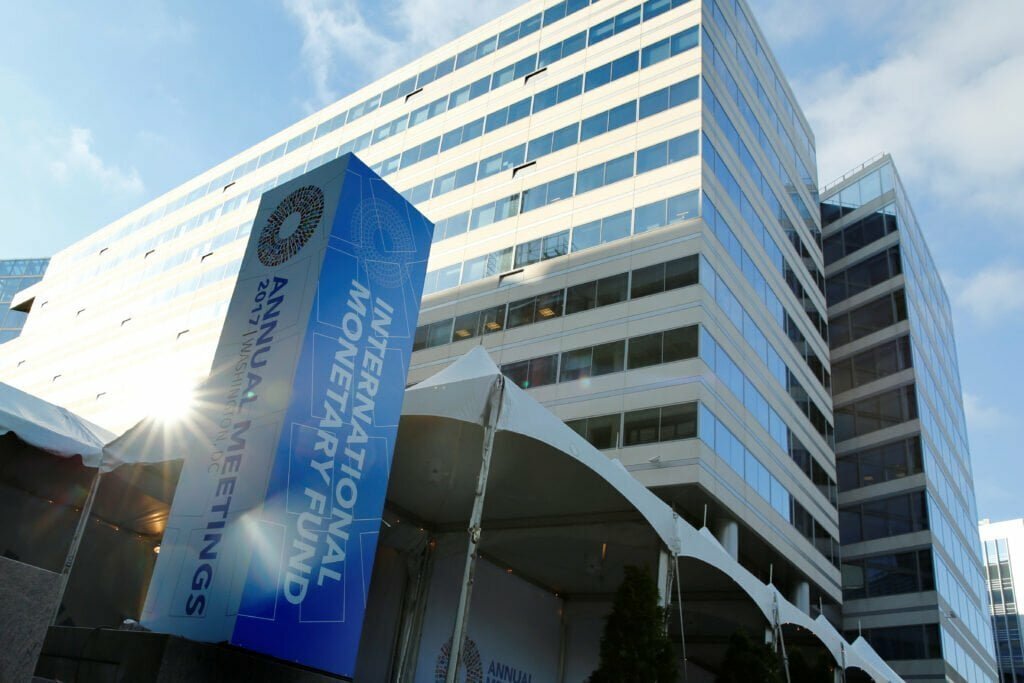
Debt is specifically identified as a key component of SDG implementation, particularly in the developing world. In a 2018 paper written by a joint World Bank-IMF team, it was noted on several occasions that “debt vulnerabilities” in developing economies are being addressed by those financial institutions “within the context of the global development agenda (e.g., SDGs).”
That same year, the World Bank and IMF’s Debt Sustainability Framework (DSF) became operational. Per the World Bank, the DSF “allows creditors to tailor their financing terms in anticipation of future risks and helps countries balance the need for funds with the ability to repay their debts.” It also “guides countries in supporting the SDGs, when their ability to service debt is limited.”
Expressed differently, if countries cannot pay the debt they incur through IMF loans and World Bank (and associated Multilateral Development Bank) financing, they will be offered options to “repay” their debt through implementing SDG-related policies. However, as future instalments of this series will show, many of these options supposedly tailored to SDG implementation actually follow the “debt for land swap” model (now re-tooled as “debt for conservation swaps” or “debt for climate swaps”) that precede the SDGs and Agenda 2030 by a number of years. This model essentially enables land grabs and land/natural resource theft on a scale never before seen in human history.
Since their creation in the aftermath of World War II, both the World Bank and IMF have historically used debt to force countries, mostly in the developing world, to adopt policies that favour the global power structure. This was made explicit in a leaked US Army document written in 2008, which states that these institutions are used as unconventional, financial “weapons in times of conflict up to and including large-scale general war” and as “weapons” in terms of influencing “the policies and cooperation of state governments.” The document notes that these institutions in particular have a “long history of conducting economic warfare valuable to any ARSOF [Army Special Operations Forces] UW [Unconventional Warfare] campaign.”
The document further notes that these “financial weapons” can be used by the US military to create “financial incentives or disincentives to persuade adversaries, allies and surrogates to modify their behavior at the theater strategic, operational, and tactical levels.” Further, these unconventional warfare campaigns are highly coordinated with the State Department and the Intelligence Community in determining “which elements of the human terrain in UWOA [Unconventional Warfare Operations Area] are most susceptible to financial engagement.”
Notably, the World Bank and the IMF are listed as both Financial Instruments and Diplomatic Instruments of US National Power as well as integral parts of what the manual calls the “current global governance system.”
While they were once “financial weapons” to be wielded by the Anglo-American Empire, the current shifts in the “global governance system” also herald a shift in who is able to weaponize the World Bank and IMF for their explicit benefit. As the sun sets on the imperial, “unipolar” model and the dawn of a “multipolar” world order is upon us. The World Bank and IMF have already been brought under the control of a new international power structure following the creation of the UN-backed Glasgow Financial Alliance for Net Zero (GFANZ) in 2021.
At the COP26 conference that same year, GFANZ announced plans to overhaul the role of the World Bank and IMF specifically as part of a broader plan aimed at “transforming” the global financial system. This was made explicit by GFANZ principal and BlackRock CEO Larry Fink during a COP26 panel, where he specified the plan to overhaul these institutions, saying:
If we’re going to be serious about climate change in the emerging world, we’re going to have to really focus on the reimagination of the World Bank and the IMF.
GFANZ’s plans to “reimagine” these international financial institutions involve merging them with the private-banking interests that compose GFANZ; creating a new system of “global financial governance”; and eroding national sovereignty (particularly in the developing world) by forcing them to establish business environments deemed friendly to the interests of GFANZ members.
As noted in a previous Unlimited Hangout report, GFANZ seeks to use the World Bank and related institutions “to globally impose massive and extensive deregulation on developing countries by using the decarbonization push as justification. No longer must MDBs [multilateral development banks] entrap developing nations in debt to force policies that benefit foreign and multinational private-sector entities, as climate change-related justification can now be used for the same ends.”
Debt remains the main weapon in the arsenal of the World Bank and IMF, and will be used for the same “imperial” ends, only now with different benefactors and a different array of policies to impose on their prey – the SDGs.
The UN’s Quiet Revolution
GFANZ is a significant driver of “sustainable development.” It is, nonetheless, just one of many SDG related “public-private partnerships.” The GFANZ website states:
GFANZ provides a forum for leading financial institutions to accelerate the transition to a net-zero global economy. Our members currently include more than 450 member firms from across the global financial sector, representing more than $130 trillion in assets under management.
GFANZ is formed from a number of “alliances.” The banks, asset managers, asset owners, insurers, financial service providers and investment consultancies each have their own global partnership networks that collectively contribute to the GFANZ forum.
For example, the UN’s Net Zero Banking Alliance affords Citigroup, Deutsche Bank, JPMorgan, HSBC and others the opportunity to pursue their ideas through the GFANZ forum. They are among the key “stakeholders” in the SDG transformation.
In order to “accelerate the transition,” the GFANZ forum’s “Call to Action” empowers these multinational corporations to stipulate specific policy requests. They have decided that governments should adopt “economy-wide net-zero targets.” Governments also need to:
[R]eform [. . . ] financial regulations to support the net zero transition; phase-out of fossil fuel subsidies; pric[e] carbon emissions; mandat[e] net zero transition plans and [set] climate reporting for public and private enterprises by 2024
All of this is necessary, we are told, to avert the “climate disaster” that might happen one day. Therefore, this “global financial governance” policy agenda is simply unavoidable and we should allow private (and historically predatory) financial institutions to create policy aimed at de-regulating the very markets in which they operate. After all, the “race to Net Zero” must happen at break-neck speed and, per GFANZ, the only way to “win” involves scaling “private capital flows to emerging and developing economies” like never before. Were the flow of this “private capital” to be impeded by existing regulations or other obstacles, it would surely spell planetary destruction.
King Charles III, explained the new global SDG economy that will relegate elected governments to “enabling partners.” Then titled Prince Charles, speaking at COP26, in preparation for the GFANZ announcement, he said:
My plea today is for countries to come together to create the environment that enables every sector of industry to take the action required. We know this will take trillions, not billions of dollars. We also know that countries, many of whom are burdened by growing levels of debt, simply cannot afford to go green. Here we need a vast military style campaign to marshal the strength of the global private sector, with trillions at its disposal far beyond global GDP, [. . .] beyond even the governments of the world’s leaders. It offers the only real prospect of achieving fundamental economic transition.
Just as the alleged urgency to implement the SDGs exonerates public policy makers, it also lets the private sector, that drives the antecedent policy agendas, off the hook. The fact that the debt they collectively create primarily benefits private capital is just a coincidence; an allegedly inescapable, consequence of creating the “fiscal space” needed to deliver “sustainable development.”
The UN’s increasing reliance upon these “multi-stakeholder partnerships” is the result of the “quiet revolution” that occurred in the UN during the 1990s. In 1998, then UN Secretary General, Kofi Annan, told the World Economic Forum’s Davos symposium:
The business of the United Nations involves the businesses of the world. [. . .] We also promote private sector development and foreign direct investment. We help countries to join the international trading system and enact business-friendly legislation.
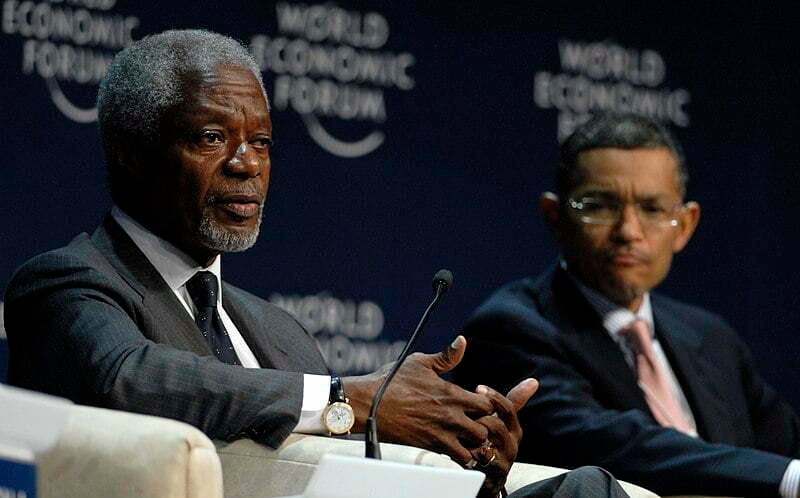
The 2017 UN General Assembly Resolution 70/224 (A/Res/70/224) decreed that the UN would work “tirelessly for the full implementation of this Agenda [Agenda 2030]” through the global dissemination of “concrete policies and actions.”
In keeping with Annan’s admission, these enacted policies and actions are designed, via “global financial governance,” to be “business-friendly.”
A/Res/70/224 added that the UN would maintain:
The strong political commitment to address the challenge of financing and creating an enabling environment at all levels for sustainable development. [. . .] [P]articularly with regard to developing partnerships through the provision of greater opportunities to the private sector, non-governmental organizations and civil society in general [. . .], in particular in the pursuit of sustainable development [SDGs].
This “enabling environment” is synonymous with the “fiscal space” demanded by the World Bank and other UN specialised agencies. The term also makes an appearance in the GFANZ progress report, which states that the World Bank and Multilateral Development Banks should be used to prompt developing nations “to create the right high-level, cross-cutting enabling environments” for alliance members’ investments in those nations.
This concept was firmly established in 2015 at the Adis Ababa Action Agenda conference on “financing for development.” The gathered delegates from 193 UN nation states committed their respective populations to an ambitious financial investment programme to pay for sustainable development.
They collectively agreed to create:
…an enabling environment at all levels for sustainable development; [. . .] to further strengthen the framework to finance sustainable development.
The “enabling environment” is a government, and therefore taxpayer-funded commitment to SDGs. Annan’s successor and the 9th Secretary General of the UN, António Guterres, authorised a 2017 report on A/Res/70/224 which read:
The United Nations must urgently rise to the challenge of unlocking the full potential of collaboration with the private sector and other partners. [. . .] [T]he United Nations system recognizes the need to further pivot towards partnerships that more effectively leverage private sector resources and expertise. The United Nations is also seeking to play a stronger catalytic role in sparking a new wave of financing and innovation needed to achieve the Goals [SDGs].
While called an intergovernmental organisation, the UN is not just a collaboration between governments. Some might reasonably argue that it never was.
The UN was created, in no small measure, thanks to the efforts of the private sector and the “philanthropic” arms of oligarchs. For instance, the Rockefeller Foundation’s (RF’s) comprehensive financial and operational support for the Economic, Financial and Transit Department (EFTD) of the League of Nations (LoN), and its considerable influence upon the United Nations Relief and Rehabilitation Administration (UNRRA), arguably made the RF the key player in the transition of the LoN into the UN.
In addition, the Rockefeller family, which has long promoted “internationalist” policies that expand and entrench global governance, donated the land on which the UN’s headquarters in New York sits, among other sizeable donations to the UN over the years. It should come as little surprise that the UN is particularly fond of one of their main donors and has long partnered with the RF and praised the organisation as a model for “global philanthropy.”

The UN was essentially founded upon a public-private partnership model. In 2000, the Executive Committee of the UN Educational, Scientific and Cultural Organization (UNESCO) published Private Sector Involvement and Cooperation with the United Nations System:
The United Nations and the private sector have always had extensive commercial links through the procurement activities of the former. [. . .] The United Nations market provides a springboard for a company to introduce its goods and services to other countries and regions. [. . .] The private sector has also long participated, directly or indirectly, in the normative and standard-setting work of the United Nations.
Being able to influence, not only government procurement, but also the development of new global markets and the regulation of the same is, obviously, an extremely attractive proposition for multinational corporations and investors. Unsurprisingly, UN projects that utilise the “public-private” model are the favoured approach of the world’s leading capitalists. For instance, it has long been the favoured model of the Rockefeller family, who often finance such projects through their respective philanthropic foundations.
In the years since its inception, public-private partnerships have expanded to become dominant within the UN system, particularly with regard to “sustainable development.” Successive Secretary Generals have overseen the UN’s formal transition into the United Nations’ Global Public-Private Partnership (UN-G3P).
As a result of this transformation, the role of nation state governments at the UN has also changed dramatically. For instance, in 2005, the World Health Organisation (WHO), another specialised agency of the UN, published a report on the use of information and communication technology (ICT) in healthcare titled Connecting for Health. Speaking about how “stakeholders” could introduce ICT healthcare solutions globally, the WHO noted:
Governments can create an enabling environment, and invest in equity, access and innovation.
As King Charles III noted last year in Glasgow, governments of “democratic” nation have been given the role of “enabling” partners. Their job is to create the fiscal environment in which their private sector partners operate. Sustainability policies are developed by a global network comprised of governments, multinational corporations, non-governmental organisations (NGOs), civil society organisations and “other actors.”
The “other actors” are predominantly the philanthropic foundations of individual billionaires and immensely wealthy family dynasties, such as the Bill and Melinda Gates (BMGF) or the Rockefeller Foundations. Collectively, these “actors” constitute the “multi-stakeholder partnership.”
During the pseudopandemic, many came to acknowledge the influence of the BMGF over the WHO, but they are just one of many other private foundations that are also valued UN “stakeholders.”
The UN is, itself, a global collaboration between governments and a multinational infra-governmental network of private “stakeholders.” The foundations, NGOs, civil society organisations and global corporations represent an infra-governmental network of stakeholders, just as powerful, if not more so, than any power block of nation states.
Public-Private Partnership: An Ideology
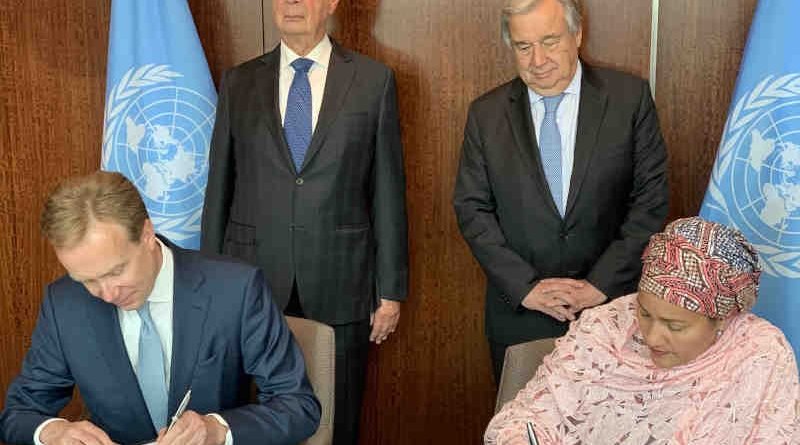
In 2016, UN-DESA published a working paper investigating the value of public-private partnerships (G3Ps) for achieving the SDGs. The lead author, Jomo KS, was the Assistant Secretary General in the United Nations system responsible for economic research (2005-2015).
UN-DESA broadly found that G3Ps, in their current form, were not fit for purpose:
[C]laims of reduced cost and efficient delivery of services through [G3Ps] to save tax payers money and benefit consumers were mostly empty and [. . .] ideological assertions. [. . ] [G3P] projects were more costly to build and finance, provided poorer quality services and were less accessible [. . .] Moreover, many essential services were less accountable to citizens when private corporations were involved. [. . .] Investors in [G3Ps] face a relatively benign risk [. . .] penalty clauses for non-delivery by private partners are less than rigorous, the study questioned whether risk was really being transferred to the private partners in these projects. [. . .] [T]he evidence suggests that [G3Ps] have often tended to be more expensive than the alternative of public procurement while in a number of instances they have failed to deliver the envisaged gains in quality of service provision.
Citing the work of Whitfield (2010), which examined G3Ps in Europe, North America, Australia, Russia, China, India and Brazil, UN-DESA noted that these led to “the buying and selling schools and hospitals like commodities in a global supermarket.”
The UN-DESA reports also reminded the UN’s G3P enthusiasts that numerous intergovernmental organisations had found G3Ps wanting:
Evaluations done by the World Bank, International Monetary Fund (IMF) and European Investment Bank (EIB) – the organizations normally promoting [G3Ps] – have found a number of cases where [G3Ps] did not yield the expected outcome and resulted in a significant rise in government fiscal liabilities.
Little has changed since 2016 and yet the UN-G3P insist that public-private partnership is the only way to achieve SDGs. Ignoring the assessment from its own investigators, In General Assembly Resolution 74/2 (A/Res/74/2) the UN declared:
[UN member states] Recognize the need for strong global, regional and national partnerships for Sustainable Development Goals, which engage all relevant stakeholders to collaboratively support the efforts of Member States to achieve health-related Sustainable Development Goals, including universal health coverage [UHC2030] [. . .] the inclusion of all relevant stakeholders is one of the core components of health system governance. [. . . ] [We] Reaffirm General Assembly resolution 69/313 [. . .] to address the challenge of financing and creating an enabling environment at all levels for sustainable development. [We will] provide [. . .] sustainable finances, while improving their effectiveness [. . .] through domestic, bilateral, regional and multilateral channels, including partnerships with the private sector and other relevant stakeholders.
This UN commitment to global public-private partnership is an “ideological assertion” and is not based upon the available evidence. In order for G3Ps to actually function as claimed, UN-DESA stipulated that a number of structural changes would need to be put in place first.
These included careful identification of where a G3P could work. UN-DESA found that G3Ps may be suited to some infrastructure projects but were damaging to projects dealing with public health, education or the environment.
The UN researchers stated that diligent oversight and regulation of pricing and the alleged transfer of risk would be required; comprehensive and transparent fiscal accounting systems were needed; better reporting standards should be developed and rigorous legal and regulatory safeguards were necessary.
None of the required structural or policy changes recommended in the UN-DESA 2016 report have been implemented.
Sustainability for whom?
Agenda 2030 marks the waypoint along the path to Agenda 21. Publicly launched at the 1992 Rio Earth Summit, Section 8 explained how “sustainable development” would be integrated into decision making:
The primary need is to integrate environmental and developmental decision-making processes. [. . .] Countries will develop their own priorities in accordance with their national plans, policies and programmes.
Sustainable development has been integrated with every policy decision. Not only does every country have a national sustainability plan, these have devolved to local government.
It is a global strategy to extend the reach of global financial institutions into every corner of the economy and society. Policy will be controlled by the bankers and the think-tanks that infiltrated the environmental movement decades ago.
No community is free of “global financial governance.”
Simply put, sustainable development supplants decision making at the national and local level with global governance. It is an ongoing, and thus far successful, global coup.
But more than this, it is a system for global control. Those of us who live in developed nations will have our behaviour changed as a psychological and economic war is waged against us to force our compliance.
Developing nations will be kept in penury as the fruits of modern industrial and technological development are denied to them. Instead they will be burdened with the debt foisted upon them by the global centres of financial power, their resources pillaged, their land stolen and their assets seized – all in the name of “sustainability.”
Yet it is perhaps the financialisation of nature, inherent to sustainable development, that is the greatest danger of all. The creation of natural asset classes, converting forests into carbon sequestration initiatives and water sources into human settlement services. As subsequent instalments of this series will show, several SDGs have financialising nature at their core.
As openly stated by the UN, “sustainable development” is all about transformation, not necessarily “sustainability” as most people conceive of it. It aims to transform the Earth and everything on it, including us, into commodities – the trading of which will form the basis of a new global economy. Though it is being sold to us as “sustainable,” the only thing this new global financial system will “sustain” is the power of a predatory financial elite.
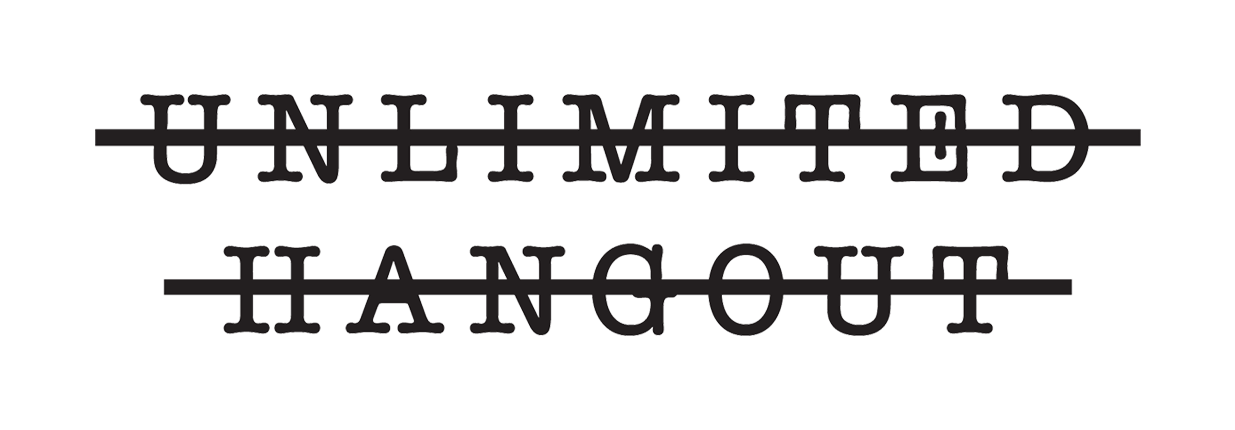
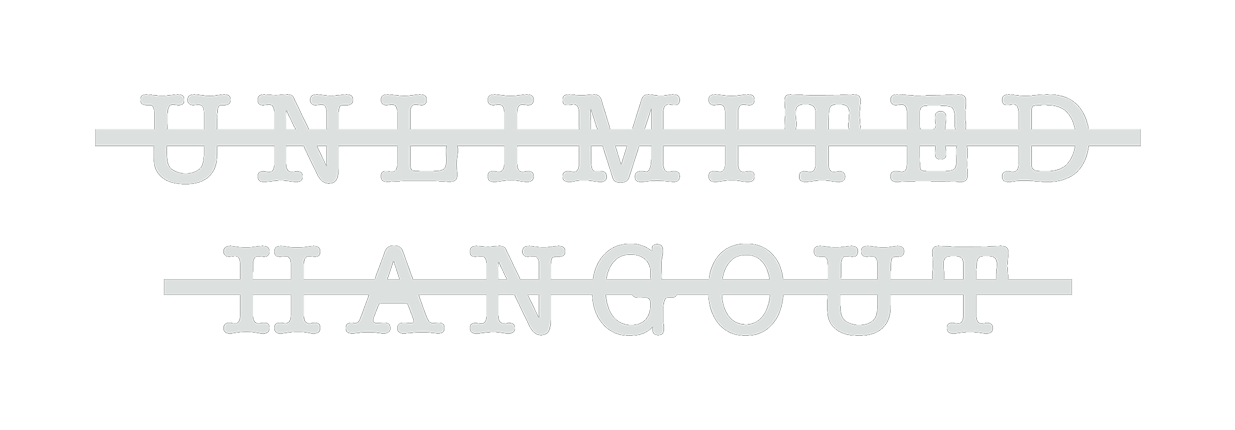




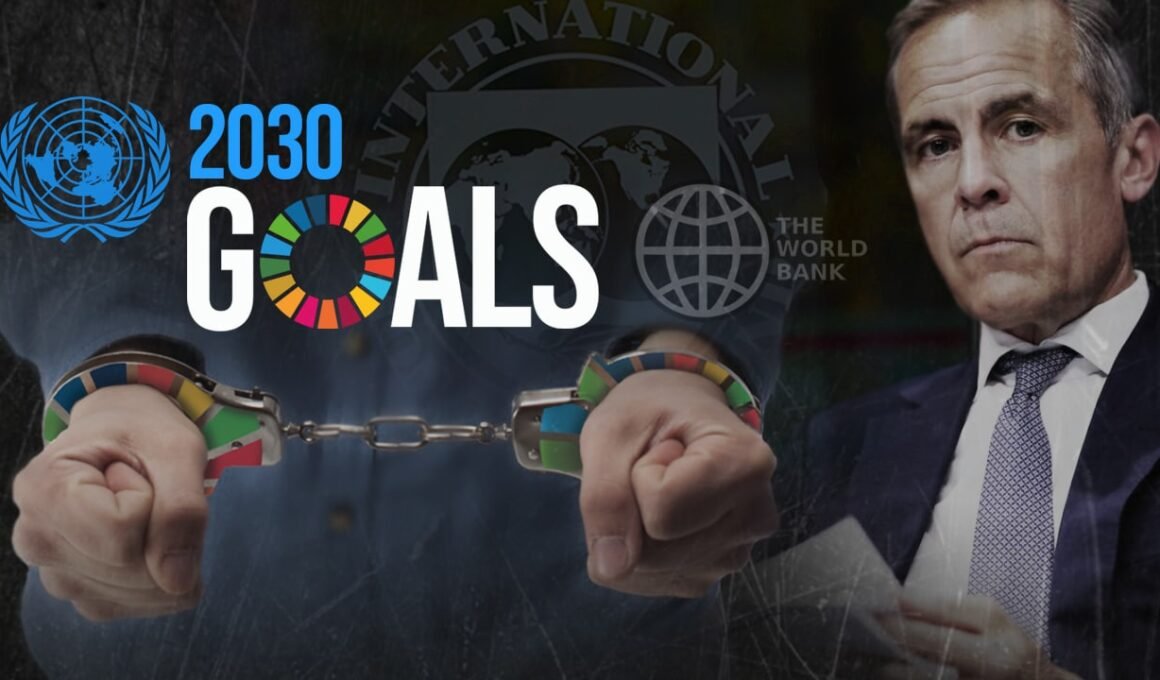
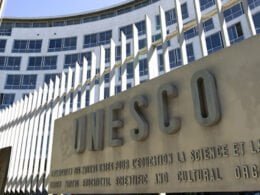
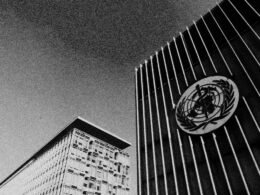


SDG – Code word for population control. Humans a destroy the earth and therefore must be controlled/eliminated. A religious cult (GAIA), and they will be our high priests.
Biodiversity – You no longer have the right to live where you want, or the way you want.
It’s a convincing argument and exactly what they want you to think about them. I’m sorry to tell you that the future is much much worse than you know and that the sun and natural forces electro terraform the earth every 12,000 years and the elites and Davos know 2048 is the year secret scientist are predicting for the solar micro nova and end of most surface life on earth. The good news is the earth will not be destroyed and this is just a minor bio stress event that occurs regularly on our planet and our planet allways recovers and humans always survive. The bad news is that this “minor bio-stress event” on the planet that happens every 12,000 years approx will probably kill very very large percentage of unprepared surface life on planet and typically these events result in 4-8% of large mammals and mega fauna going extinct because they are very very dangerous. I am not aligned with GAIA religous cult and would mention that the elites want you to consider GAIA a religous cult the same way they want JFK assasination to be a conspiracy theory. What you hear about GAIA on mass media is most likley propaganda and should not be trusted. All of mass media is likely propaganda and should not be trusted.
Anyway, I will close this by sharing with you a video about how the CIA recently, quietly, declasified a tip to those who are paying attention that the world as we know it is going to end and is the process of ending which has already started and it will take about 30 years till most of the people are dead. The information I will share with you in a video can be checked and there is more supporting information on the same YouTube channel and also there are many other videos with scientific supporting evidence in the YouTube playlist that I will share with you now. https://www.youtube.com/watch?v=wvjJqIXYT1w&list=PL5IzVFR-bW4ceHjOTHLPbooI40AQQPcDC&index=12&t=1340s
Thanks for the 2048 info. I have been watching SO for awhile and Ben seems to very informative. I like listening to his 3 minute info on the sun and galactic force which effect our planet. Stuff we are not taught! Eyes open, No fear!
The fact that the banks and other private corporations use this language of sustainability to do what they were doing already, that is to make unrepayable loans to the least reliable national leaders on predatory terms in order to secure resources and favor the unsustainable lifestyles of the wealthy parts of global society is not a surprise. But neither does it make the concept of ecological sustainability useless. Nor does it mean that global warming, species extinction , toxic effluents from industrial and particularly petrochemical based industry are not serious problems. There are already growing areas of drought, more devastation from flooding loss of aquifers, devastating species loss, and a significant danger to costal areas from sea levels rising.
What is obvious in this WEF literature and the commercial privatization of the concept of sustainability is that they have have no actual plan to prevent the climate devastation that has begun. They don’t challenge wealth inequality or any of the main causes of the problems of greenhouse gases like long distance transportation of food, goods, and material resources, wars, electronic goods and plastic products with short lifespans, petrochemical farming, inefficient buildings etc.
They don’t include in their plans and thoughts radical environmentalist, working class representatives, truly green architects, anthropologists, ecology based economists and a cross section of those whose concern is not commercial but based on love of the planet’s biospheric riches, love of humans , and opposition to killing this living complexity for the short term maintenance of destructive patterns that favor violence, theft and enslavement.
In other words this WEF use of the concept of sustainability is much the same as their use of the term democracy which has nothing to do with representative self government and national sovereignty but is a tool to place some above the law and above suffering and the majority in subjugation to the interests of warmongers, and imperialist economic exploitation.
My question is whether you accept that human industrial processes have created an unsustainable ecologically devastating pattern that needs serious adjustment?
That’s a brilliant and very impprtant comment Mr. Tracy. I think it adds a very important and true consideration to this excellent essay/investigative report.
I am disappointed that you will not publish my comments which are written respectfully to ask honest legitimate questions. How is this different from Facebook censors or Twitter censors? I am not asking you to publish this particular comment, but I have been reading Whitney’s work with appreciation for awhile and want to understand why you refuse to engage with the core question of eco destruction and human caused greenhouse effect. I can understand the early reluctance to accept the science was solid enough but there is no other credible explanation and this effect has been scientifically predicted based on CO 2 since the 1800s. It places a big question mark about your values as regards respectful discourse and disagreement around important topics. It just seems that building a following of people who cannot cope politely with questions that probe at core premises is a pattern that is all too common and only serves to make rather insular spaces that cannot truly move our social discourse toward long term solutions or bridge divides. As just a human with human emotions it hurts to find someone who I respect and find to be doing important work , only to find they refuse to even allow my questions and thoughts to be aired. Let me tell you a bit about myself if you have a moment. I live in Vt on a acre with a large garden and a small barn where I have a stained glass studio. Avid reader, flute player, faithful husband, teacher of glass art and tai chi, handy person, living poor to pay no war taxes. I lived for 7 years in a large Christian Commune and still retain spiritual values derived from the teachings of Jesus along with powerful influence from Taoism, Native American spirituality and many poets artists human rights fighters…. I despise all forms of colonialism, and would like to see smaller more local communities as decision making centers.
Sorry for so many comments. I just realized I was not a member which I thought I was, so I just became one. I hope that helps my attempts to participate. Of the 2 comments I submitted before or this one this I would prefer if you would only publish the first. Perhaps there is no room here for my ideas which will be sad for me but when I read something I often want to respond. I try to never be mean-spirited or insulting but just as you, I feel it necessary to criticize those abusers with too much power.
Being a member has nothing to do with comment approval. We have to manually approve comments so you may have to wait to see your comment. Alternatively, your comment may have been flagged as spam.
Guys, historically you know from where USURY comes from, right?
In the 17th century, as soon as they restarted having influence in society again, as soon they started with their dirty deeds of lending money and demand high interest back.
I’m talking about the jews, the jewish luciferian cabalists, the only people on earth having a ‘great plan’ to establish a global dictatorship, which they call an “Universal Republic”.
I’m not a member; I don’t mind if you don’t publish this- I just wanted you to know who are the real culprits for that ‘sustainable’ debt’! The guys from the WEF [and UN] and just proxy useful idiots; the Bank for International Settlements which is privately owned by them control ALL governments and the world. Remember that communism is jewish and it’s them who control freemasonry!!
Keep up your good works!!!
I do not believe that the so called “global south” will buy into the Western dogma from the UN, WEF, IMF, World Bank and global central banking cabal. Oddly, Putin does call upon UN leadership to abide by an international rules based order, but the WEF’s “multi polar world” which it celebrates on it’s website is just another lie that it falsely espouses (even though it cannot apparently control the truth that a multi polar world is unstoppable). Like every lie that falls out of the mouth of the global technocratic Euthanocracy, the WEF secretly desires unipolarity under UN / WHO global biosecurity rule (as Whitney knows all too well) and BIS international monetary and finacial economic rule.
I do not believe that Russia will go along with it (despite Sber’s infiltration – Putin’s attitude there is “if some people want it, let them have it). Increasingly, Iran, India, the Stans and other key members of the G7 seem intent upon riding the EUEU and SCO plan to develop a gold and commodity backed global reserve currency, tied to national currencies as a competitive system to the current SWIFT / biomedical tyranny backed CBDC(s) of the West.
So I think it’s fitting to look at this article’s focus as a “Western dollar faction” backed “solution” vs. a global solution.
After all, much of what is being fought over in Ukraine deals with the biological treaty violations of the West, which is crucial to their “biomedical tyranny as wealth” concept – replacing the “debt as wealth” concept as debt undoubtedly begins defaulting in meaningless trillions.
The South African government, and main opposition in particular, are 100% behind Agenda2030
thank you Whitney and especially Iain for undertaking this subject
question: will this series feature “Impact” in its relation to “Sustainability”? to me, the term Impact represents the commodification of data necessary to actualize sustainability goals by tracking and manipulating individuals, companies, and governments within metrics created by the aforementioned “multi-stakeholder partners.” it should be noted that impact investing is a term coined by the Rockefeller Foundation in 2007, “putting a name to investments made with the intention of generating both financial return and social and/or environmental impact.”
https://www.rockefellerfoundation.org/blog/bringing-scale-impact-investing-industry/
https://impactmanagementproject.com/
https://thegiin.org/about/
Point eleven of the Nazi Party Program sought to abolish debt slavery:
https://en.wikipedia.org/wiki/National_Socialist_Program
Hi Whitney and Iain,
Could you explain what you mean by UN G3P? I don’t see it explained anywhere in the article, and when I search the internet for it, I find this: https://www.un-igrac.org/special-project/g3p and this_ https://www.g3p.eu/what-we-have-for-you
I think you define UN G3P as the public-private-citizen imagined partnerships as part of Goal 17, but I think it might be helpful to know that this is an actual synonym used by UN to refer to trying to map all groundwater. Just skimming over the websites, it doesn’t look like it is a truly benevolent exercise, either. They do have a picture of the Hanford nuclear waste site on their website, I wonder what the link is (apart from seriously contaminated groundwater) to mapping groundwater sources.
Thanks!
Search for UN-G3P in this article (Ctrl+F (Windows) or Command+F (Mac) to invoke the find feature) to see the definition and more.
Have you got a blueprint or a plan on how people can work together in their local communities to break away from this evil system?
Whitney said that she was surprised that nobody else is writing about or investigating the SDGs.
I nearly cried.
I wrote about them, with an interpretation of each SDG in 2015 and republished updated version twice since then.
I also drew attention to the binary world promoted by the Pentagon.
Oddly, I thought Iain knew that I had already covered this years ago!
I have shared this article along with a video of you discussing it here: https://francesleader.substack.com/p/whitney-webb-and-iain-davis-dig-into
Because human caused climate change, and the whole fake scientific assumptions, are wrong. In fact, we don’t have a greenhouse effect on earth any more than normal, and carbon doesnt drive climates or weather.
Could we prepare for a extreme solar and planetary event, yes, but the only preparation is for people to be as self sufficient and independent ( flexible and adaptive) as possible and that is in direct opposition to the goals of the elite. They in fact are the greater threat , because their plans ultimately are transhumsn classes of society. Genetic or biochemical manipulation produce the kind of classes they want. Its already happening with estrogen dominant passive makes unable to reproduce.
So if you want to do something, buy some land and make a garden. Regenerate the soil and start decontaminating from nano plastic particles. See if you CAN buy lsnd and grow what you want. See if you CAN have a farm and be allowed to drink your own cows milk. In other words, these powers that be rely on their climate change greenhouse carbon nonsense to implement a financial and real estate take over
If there was any truth behind this “call for action”, step 1 would be to stop spraying the skies which creates a greenhouse effect. Of course they don’t stop because all of this is just for “play”.
I’d love to know what you think “they” are spraying in the skies, who is “playing”, and what the implied game is. The cause of the greenhouse effect has been well-established for quite some time now, along with the biggest contributors globally.